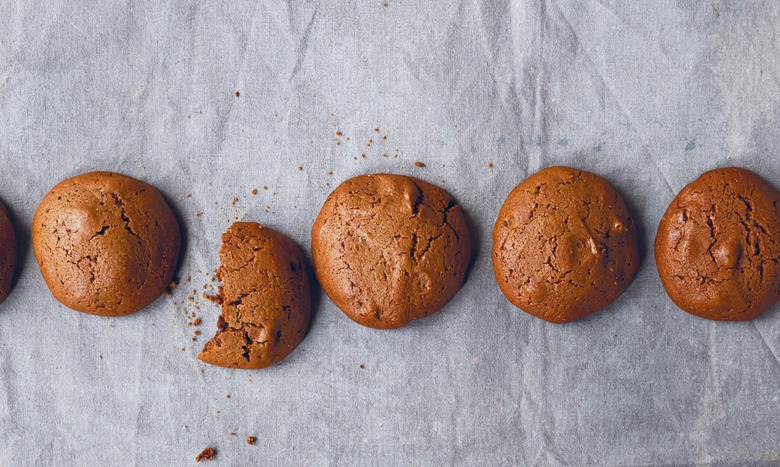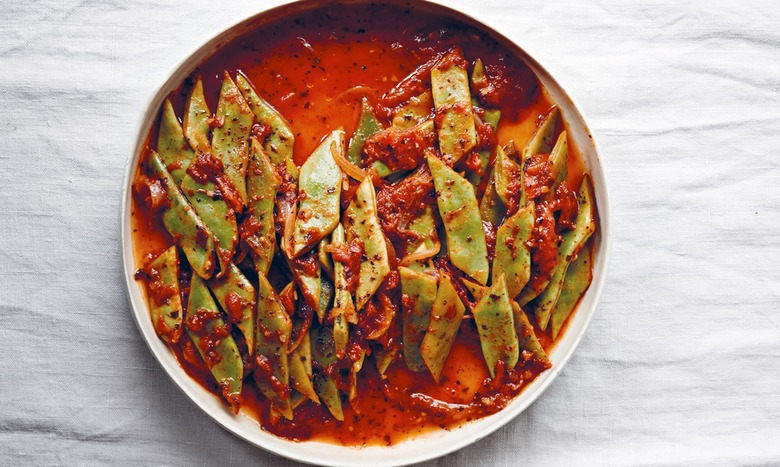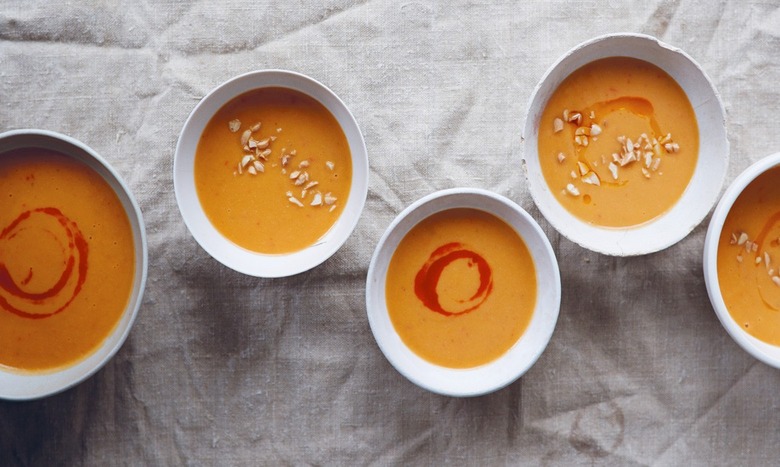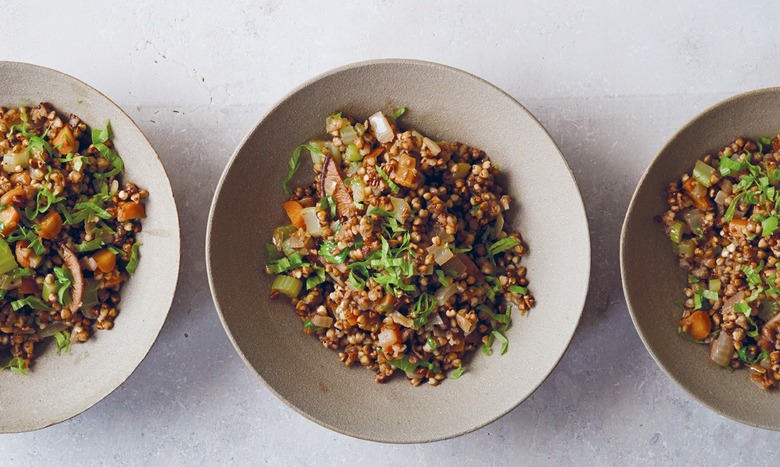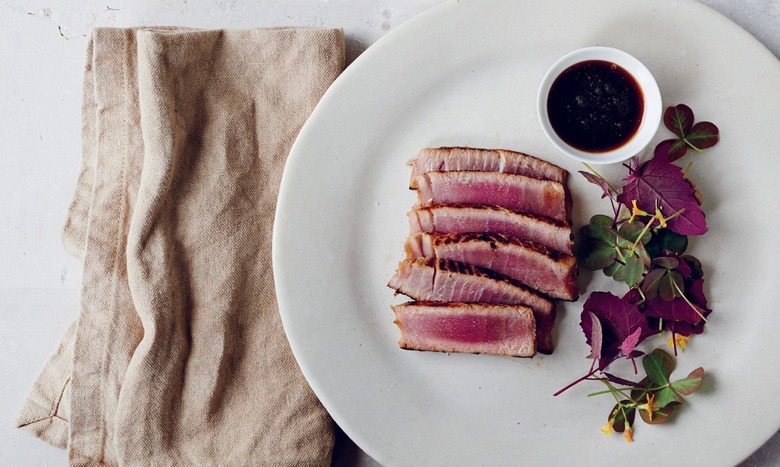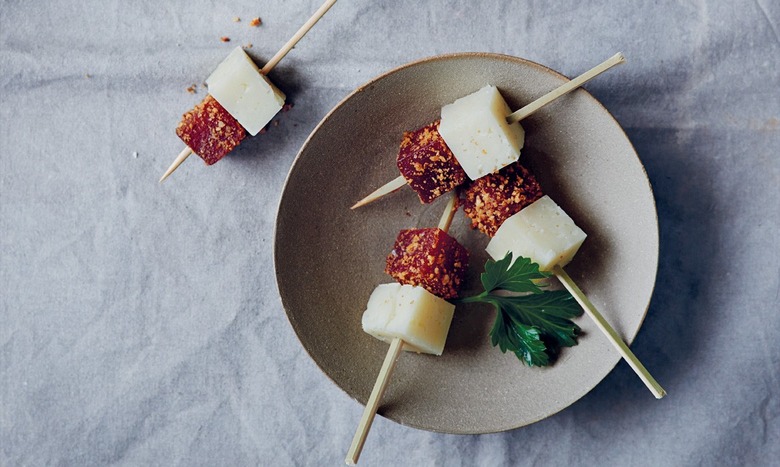Quick And Healthy Food From The 'Fast Food, Good Food' Cookbook
We may receive a commission on purchases made from links.
This isn't a book for the coffee table, although the photographs are vibrant and beautiful to flip through. Dr. Andrew Weil's latest cookbook is meant for the kitchen. The simple, no-fuss recipes are approachable for even the most amateurish of cooks, but the food is exquisite. Drawing from ingredients that any food lover is familiar with — carrots, fennel, tuna, squash, and more — he creates simple and enjoyable food that you can eat every day.
Click here for the 10 Cookbooks Everyone Should Have slideshow.
Unlike so many other health-focused cookbooks, it's not all about numbers, calorie counting, and restrictions. Instead, Weil uses his extensive research on anti-inflammatory foods to craft recipes that are simple to prepare, delicious, and almost as a side note, healthy.
He wants people to reach more often for the vegetables, than the potato chips, and most notably he wants people to adopt a healthy lifestyle, rather than having a flimsy relationship with trendy diets.
Fast Food, Good Food, doesn't preach, it teaches you everything from how to use those kitchen tools that sit in your drawers to how to stock your pantry — a first step when adopting healthy eating habits.
We had a chance to catch up with Andrew Weil, M.D. to discuss his book, the anti-inflammatory diet, and what healthy means to him.
The following interview has been edited for content and clarity.
The Daily Meal: What first drew you to cooking? What inspires you in the kitchen?
Andrew Weil, M.D.: While I was in medical school, I discovered that cooking was a great way to get myself back in a good mental state after working long hours at the hospital. I just envisioned something wonderful to eat, and then shopping for ingredients and chopping vegetables became a great way to order my mind.
Ever since, cooking has been a meditative experience for me. I think that is what first drew me to [cooking], but of course, I also like to eat and I love food.
How did those influences affect the recipes you chose for this book?
Well you know, I have for a long time tried to show people there isn't a difference between food that is good and food that is good for you. So many people I meet think there is an opposition between healthy food and food that tastes good, but that is just not the case.
I have always wanted to show people [healthy food can taste good], and the cookbooks I have written over the years have tried to do just that.
I think the most consistent feedback I have received from people lately is that they don't have time to cook. So I tried to put together recipes that are really quick and easy. In this book, Fast Food, Good Food, all of the recipes are easily made in 30 minutes or less.
You mention you are a proponent of the anti-inflammatory diet. Can you tell us a little bit more about that?
My research has led me to believe that chronic inappropriate inflammation is the root cause of most of the diseases — aging, cardiovascular disease, degenerative diseases, even cancer is linked here as well. So I think the best strategy for reducing disease risk and maintaining optimum health and longevity is to follow an anti-inflammatory lifestyle — and diet is a huge part of that.
Our food choices either increase or decrease inflammation. The mainstream North American diet is very pro-inflammatory. So I wanted to design an anti-inflammatory diet. I use the Mediterranean diet as a template because we have a lot of scientific evidence showing that the Mediterranean diet is the one most associated with good health and longevity. I then tweaked this diet by adding Asian influences to it from cuisines that I am familiar with to make it more palatable for containing inappropriate inflammation. That is really the theoretical basis for the food that is in the book.
What is the first step to adopting a healthier lifestyle?
I think the first step for healthy eating is to stop eating refined, processed, and manufactured food. That is really what is doing us in.
Most people today are eating foods that are very far away from the food that nature provides us. They eat highly-refined, processed, manipulated foods that give us the wrong kinds of fat, the wrong kinds of carbohydrates, and not enough of the protective elements that are mostly found in fruits, vegetables, herbs, and spices. I am trying to correct that, but the first step is to stop eating refined, processed, and manufactured foods.
What makes this book unique from other health-focused cookbooks?
I think what makes this book unique is the simplicity of the recipes. These recipes let the ingredients shine, and they use ingredients that people can easily find in stores. I don't try to knock myself out in the kitchen; I like to make great food that looks and tastes good, but I don't want to be slaving all afternoon. Also, I don't want to use up all the pots and pans in the kitchen. These recipes are really designed to be quick, simple, and easy, and to produce results that are above all delicious, but also conform to cutting edge nutritional science.
How do you hope readers will use this cookbook?
There are guides in the cookbook: how to stock the pantry, ingredients you want to keep on hand, and tricks for making life in the kitchen simple. If you look through the book and the beautiful photographs, you will be inspired to make a lot of these dishes. Then, you will be inspired to cook the recipes. A lot of the recipes in this book are very quick — some that can be made in as little as 10 or 15 minutes.
What is the ultimate take-away?
The ultimate take-away is that you can make food that is really healthy and really delicious in relatively little time using very few ingredients.
Is there anything else you would like to share about the book?
These are recipes that I invented, that I eat, and that I cook for other people, which they really love. I think once people try this food they will be inspired to make these dishes themselves.
Want to try a recipe?
Ginger Molasses Cookies
This recipe is an homage to the healing and warming spice ginger, since it's utilized three different ways. Ginger in all forms is a powerful natural anti-inflammatory agent. The molasses makes for a really earthy cookie. — Andrew Weil, MD
Green Beans in Tomato Sauce
I prefer flat Romano beans for this typical Mediterranean dish, which I make frequently in midsummer, when I'm inundated with beans from my garden in British Columbia. If tomatoes are ready at the same time, I'll use them (peeled and seeded) for the sauce, along with fresh herbs. But this quick version with canned tomatoes and dried herbs is almost as good. As usual with vegetable recipes in this book, it is important not to overcook the beans. The difference between crunchy-tender perfection and all-the-way-through softness is only a minute or two. Please try a bean a short time before you think they might be done. — Andrew Weil, MD
Yam and Peanut Soup
There are many ways of making this hearty soup, inspired by African cuisine (although yams, tomatoes, and both sweet and hot peppers are all native to the New World). I first tasted a version at a creative vegetarian restaurant in Victoria, British Columbia, the much-loved Rebar Modern Food. (I highly recommend the Rebar: Modern Food Cookbook.) Many people will find the combinations of flavors in this soup novel and appealing. This is a good first course for fall and winter. — Andrew Weil, MD
Kasha with Vegetables
Kasha is a sort of porridge made from toasted buckwheat groats — that is, the hulled kernels of buckwheat, a grainlike seed unrelated to wheat and gluten-free. Kasha is a popular food in Russia and Poland and was brought to the United States by Jewish immigrants from those countries in the early years of the twentieth century. Kasha is richly aromatic with a distinctive, nutty taste. It cooks quickly and makes an unusual and nutritious whole-grain preparation that seems most suited to fall and winter meals. Dried and reconstituted shiitake mushrooms and their soaking liquid greatly enhance the flavor of the dish. — Andrew Weil, MD
Pan-Seared Albacore Tuna Loin
I think albacore tuna loin is best cooked rare with a thin seared outer layer, but loins are usually thicker in the middle with tapered ends, so there will be more-done and less-done portions that will suit individual preferences. The marinade gives a classic Japanese flavor to the fish. If you're in a hurry, even 30 minutes of marinating will do the job. Tuna cooked this way doesn't need any condiment, but if you wish, you can serve it with wasabi paste and pickled ginger (both available from Japanese food stores and online). — Andrew Weil, MD
Walnut-Crusted Quince and Manchego Bites
Quince paste, known as dulce de membrillo in Spanish-speaking countries, is made by cooking the hard, tart flesh of this fruit (a relative of apples and pears) with water and sugar until it turns red and sticky and holds its shape. It's available in specialty grocery stores and online. In Spain, quince paste is commonly paired with manchego cheese, made from raw sheep's milk, as a breakfast item or snack. This recipe fancies up the combination with toasted spiced walnuts and chopped parsley and it also works as a breakfast dish. — Andrew Weil, MD
For the Walnut-Crusted Quince and Manchego Bites recipe, click here.
The accompanying slideshow is provided by special contributor, Naa Ako-Adjei.
Angela Carlos is the Cook Editor at The Daily Meal. FInd her on Twitter and tweet @angelaccarlos.
